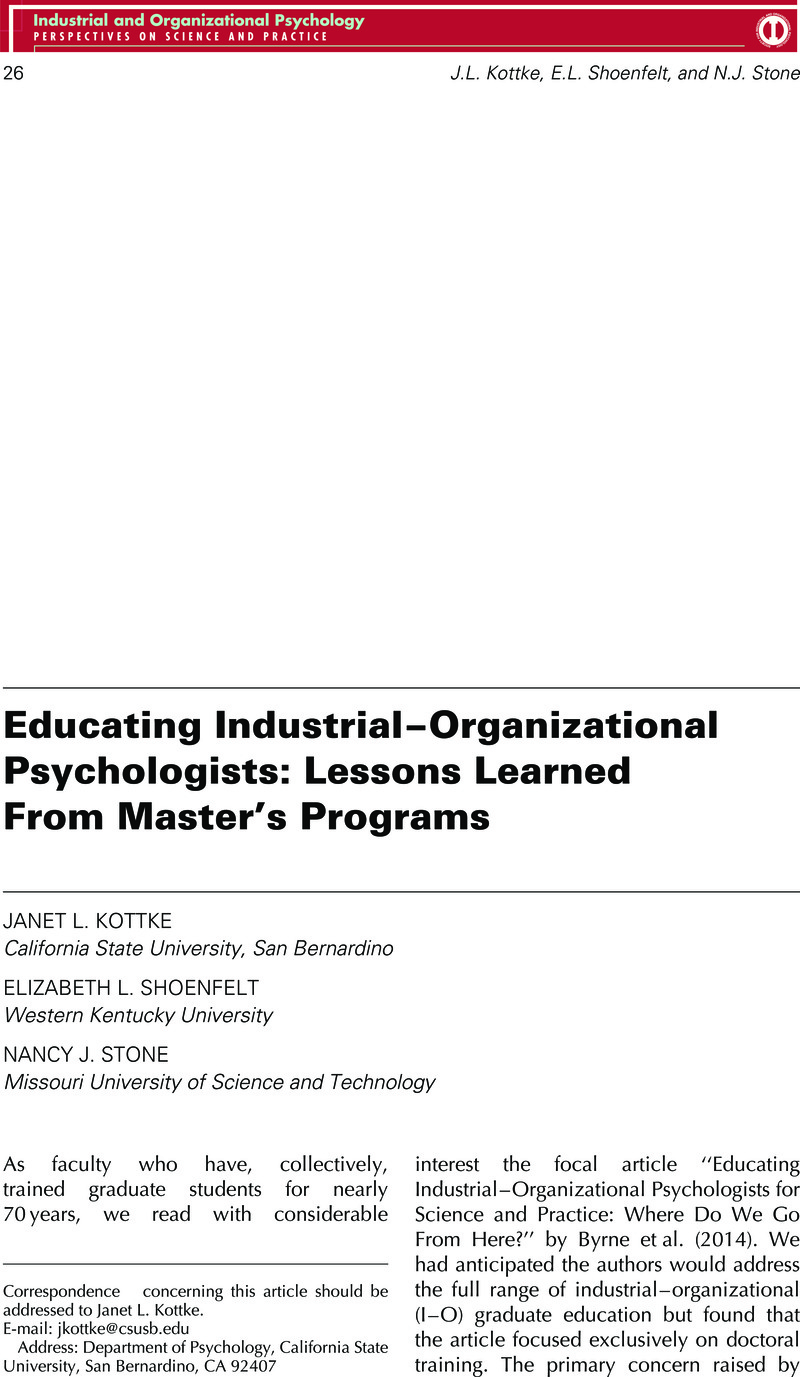Crossref Citations
This article has been cited by the following publications. This list is generated based on data provided by Crossref.
Shoenfelt, Elizabeth L.
Stone, Nancy J.
and
Kottke, Janet L.
2018.
Gaining Organizational Entry and Developing Partnerships for Applied Research and Experience: A Perspective From Industrial-Organizational Psychology Master's Programs.
Industrial and Organizational Psychology,
Vol. 11,
Issue. 4,
p.
606.





